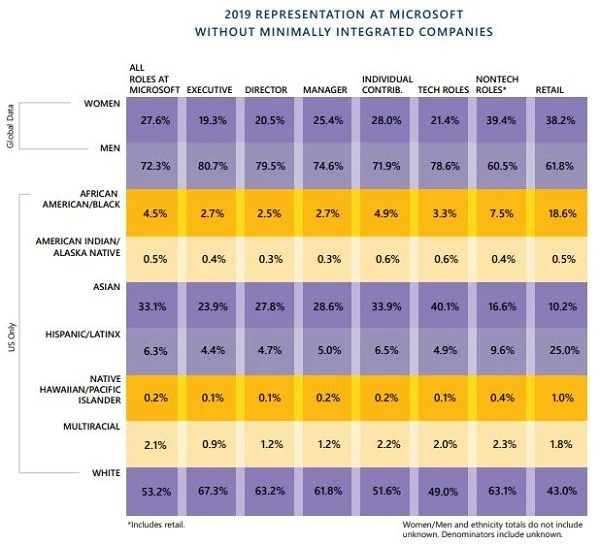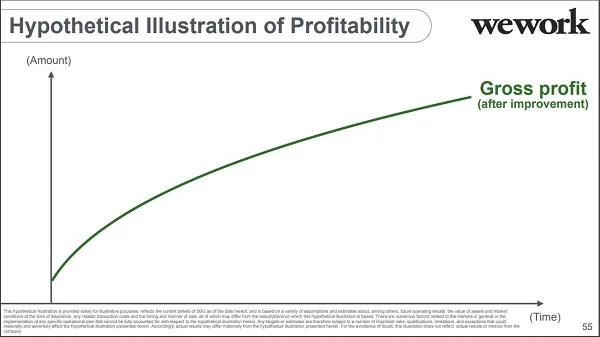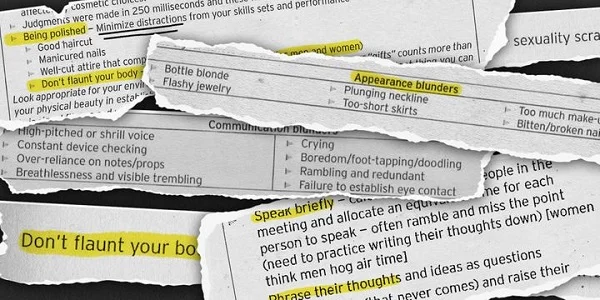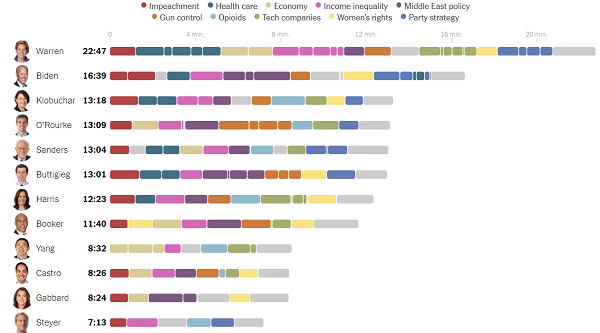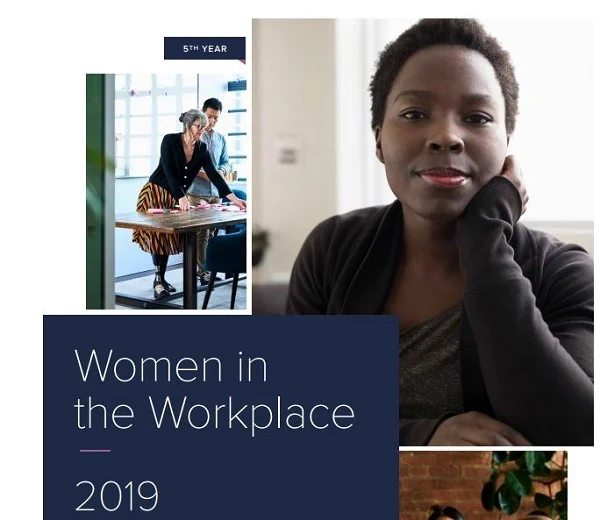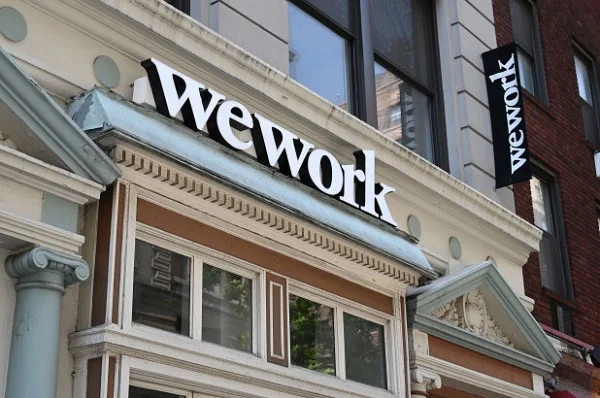T-Mobile's Full-Page Ad
In signature pink, T-Mobile ran a full-page ad in Sunday’s New York Times. The ad also feels like T-Mobile because we see “From the desk of John Legere,” the charismatic CEO and frequent tweeter with comments such as, “One of our best weapons is the ineptness of the competition. #sorrynotsorry.”
For a persuasive message, the ad is curious and a good example for business communication students to analyze.
Discussion:
Who are the primary and secondary audiences for this ad?
What are T-Mobile’s communication objectives, and how well does this message achieve them?
If you were advising the company, what suggestions would you have for revisions?
Microsoft's Diversity and Inclusion Report
Microsoft’s 2019 Diversity and Inclusion report is the company’s sixth since 2014.
In the introductory letter, we learn about positive changes in demographic data:
In technical roles alone, we have 49% more women, 48% more Hispanic/Latinx, and 67% more African American/Black employees than we did three years ago. And beyond population growth, this year’s snapshot shows diversity representation has risen in every demographic category we track.
The report includes a few dazzling graphics, such as the one shown here.
Discussion:
Read the entire report. What principles of business communication are followed?
What suggestions for improvement would you suggest to the report authors?
What’s your view of the graphic shown here? What is the main point? How else could the data be shown?
Although the report writers acknowledge that some of the diversity increase in technical roles is attributed to employee growth, what other questions might a skeptic ask?
SoftBank's Vague WeWork Slides
SoftBank already took a financial hit because of its investment in WeWork. Now, the company is facing criticism about its data analysis and presentation.
A deck SoftBank Group (SBG) used to justify its WeWork investment includes several “hypothetical” and vague slides, like this one.
If you’re having trouble reading the footnote, here it is:
This hypothetical illustration is provided solely for illustrative purposes, reflects the current beliefs of SBG as of the date hereof, and is based on a variety of assumptions and estimates about, among others, future operating results, the value of assets and market conditions at the time of disposition, any related transaction costs and the timing and manner of sale, all of which may differ from the assumptions on which this hypothetical illustration is based. There are numerous factors related to the markets in general or the implementation of any specific operational plan that cannot be fully accounted for with respect to the hypothetical illustration herein. Any targets or estimates are therefore subject to a number of important risks, qualifications, limitations, and exceptions that could materially and adversely affect the hypothetical illustration presented herein. Accordingly, actual results may differ materially from the hypothetical illustration presented herein. For the avoidance of doubt, this illustration does not reflect actual results or metrics from the company.
The slide title is also odd: the illustration isn’t hypothetical, but the profitability is.
Discussion:
How might this chart affect SoftBank’s credibility?
What other examples in the SoftBank deck are problematic?
What leadership character dimensions are illustrated by this situation?
Letter from WeWork Employees
As WeWork plans layoffs, employees are asking for input into what happens to them and their peers. Referring to themselves as WeWorkers Coalition, the employees wrote a letter to the management team.
To the We Company Management Team:
WeWork’s company values encourage us to be “entrepreneurial, inspired, authentic, tenacious, grateful and together.” Today, we are embracing these qualities wholeheartedly as we band together to ensure the well-being of our peers.
We come from many departments across the company: building maintenance, cleaning, community, design, product, engineering and more. We believe that in the upcoming weeks we have the unique opportunity to demonstrate our true values to the world. This is a company that has inspired many of us, challenged us, and has been a formative personal and professional experience for those of us who began our careers here. WeWork has been not just a workplace, but a source of friendships and inspiration along the way.
We also believe our product can have a lasting positive impact on the world. We want to improve workplace happiness for millions of office workers and support small and medium sized businesses in their entrepreneurial efforts. We have been proud to support these goals and dedicate our time and talent to achieve them. This has been our story so far.
Recently, however, we have watched as layers are peeled back one-by-one to reveal a different story. This story is one of deception, exclusion and selfishness playing out at the company’s highest levels. This is a story that reads as a negation of all our core values. But this story is not over.
Thousands of us will be laid off in the upcoming weeks. But we want our time here to have meant something. We don’t want to be defined by the scandals, the corruption, and the greed exhibited by the company’s leadership. We want to leave behind a legacy that represents the true character and intentions of WeWork employees.
In the immediate term, we want those being laid off to be provided fair and reasonable separation terms commensurate with their contributions, including severance pay, continuation of company-paid health insurance and compensation for lost equity. We are not the Adam Neumanns of this world — we are a diverse work force with rents to pay, households to support and children to raise. Neumann departed with a $1.7 billion severance package including a yearly $46 million “consulting fee” (higher than the total compensation of all but nine public C.E.O.s in the United States in 2018). We are not asking for this level of graft. We are asking to be treated with humanity and dignity so we can continue living life while searching to make a living elsewhere. In consideration of recent news, we will also need clarity around the contracts our cleaning staff will be required to sign in order to keep their jobs, which are being outsourced to a third party. Those of us who have visas through WeWork need assistance and adequate time to find a new employer to sponsor our respective visas.
In the medium term, employees need a seat at the table so the company can address a broader range of issues. We’ve seen what can happen when leadership makes decisions while employees have no voice. We will need to see more transparency and more accountability.
We also need the thousands who maintain our buildings and directly service members to receive full benefits and fair pay, rather than earning just above minimum wage.
We need allegations of sexual misconduct and harassment to be taken seriously, acted on immediately and resolved with transparency.
We need diversity and inclusion efforts to materialize into real actions, not just talking points at company meetings.
We need salary transparency so we can surface and address systemic inequalities.
We need an end to forced arbitration contracts, which strip employees of their right to pursue fair legal action against the company.
We need all of this, and more.
In the long term, we want the employees who remain at WeWork, and those who join in the future, to inherit something positive we left behind. We want them to never find themselves in this position again, and for that to happen, they need a voice.
With this letter we are introducing ourselves, the WeWorkers Coalition. We are taking full advantage of our legal right to establish this coalition, and in doing so, we hope to give the future employees of WeWork the voice we never had.
We want to work with you. Please join us in writing a better ending to this chapter of the WeWork story.
By this Thursday at 5:00 p.m. EST, we would like to receive confirmation of your receipt of this letter and an indication of your willingness to meet us.
The WeWorkers Coalition
@weworkersco • info@weworkersco.org • #weworkers-coalition
Discussion:
What principles of business writing do the employees follow?
What persuasive strategies do they use in the letter? Find examples of logical argument, emotional appeal, and credibility.
What do you consider the strongest and weakest arguments?
What leadership character dimensions are illustrated in this situation?
Conversational Voice Tone for Polling
Pollsters have a tough time getting people to answer their phones, no less answer questions about who they might vote for in the next presidential election. With such low response rates, callers have to sound conversational and personable, just as business presenters have to engage to their audience.
In a Daily Podcast, pollsters describe how to avoid sounding robotic, which is particularly difficult when you’re “reading off a screen.” The same applies to presenters who read from their notes or slides.
Discussion:
What principles of voice tone do the pollsters’ examples in the audio clip illustrate?
How can you apply these principles to your business presentations?
CVS Apologizes to Puerto Rican Customer
A Purdue University engineering student showed his Puerto Rican identification card to two CVS employees who said he couldn’t buy cold medicine. The customer service representative and a supervisor at the Indiana store said he needed to show a valid U.S. ID card or visa. Puerto Ricans are U.S. citizens.
José Guzmán Payano told reporters his point of view:
"And then when she asked me for a visa, I was in shock at that time. It wasn't worth talking anymore. It is weird because we're such a broad campus at Purdue. There are people from everywhere. But I can't use my ID from Puerto Rico? Not even my passport? This shouldn't happen here. Period."
Guzmán Payano also explained the situation to his mother, who relayed the story on Facebook, which attracted attention. Although Guzmán Payano filed a complaint with CVS, it took more than a week for the company to respond—after the story appeared in a local newspaper. The company told The NY Times this was an “an isolated incident,” and confirmed, “We absolutely recognize Puerto Rican driver’s licenses to be a valid form of U.S. identification.
A spokesperson for CVS said the company will investigate:
"We are committed to ensuring that every customer receives courteous, outstanding service in our stores, and we apologize to the customer for his recent experience. We are fully investigating this matter to learn more about what occurred."
CVS exterior image source. CVS interior image source.
Discussion:
In Guzmán Payano’s mother’s Facebook post, she wonders how this could have happened: “Was it his accent? Was it his skin color? Was it the Puerto Rican flag on the license?” What do you think?
How well has CVS handled the situation to this point? What, if anything, should the company have done differently? What should they do now?
In an updated post, Guzmán Payano’s mother asks people not to harm CVS employees. This isn’t the first time we have seen violent reactions following social media posts. What’s your view of this?
Unusual Reporting on a CEO Exit: "Fired"
McDonald’s Corporation has terminated its CEO for having a consensual relationship with an employee. Steve Easterbrook is viewed as an effective leader who made the company leaner and made good use of technology. McDonald’s immediately announced Easterbrook’s successor as Chris Kempczinski, formerly the President of McDonald's USA.
In a news release, the company explained the decision:
“Kempczinski succeeds Steve Easterbrook, who has separated from the Company following the Board's determination that he violated company policy and demonstrated poor judgment involving a recent consensual relationship with an employee.”
In an email to employees, Easterbrook wrote, “This was a mistake. Given the values of the company, I agree with the board that it is time for me to move on.” Easterbrook’s admission made it easier for McDonald’s to be transparent about the situation. In similar CEO-departure emails, we’ll see language such as, “parted ways,” “resigned,” or “stepped down,” when we know the decision wasn’t really mutual.
Easterbrook leaves McDonald’s with $670,000 in severance pay in addition to a prorated bonus and stock options.
Easterbrook image source (home page). Kempczinski image source (this page).
Discussion:
What’s your view of how McDonald’s announced the decision in the news release? What are the benefits to the company of describing what happened rather than being vague?
Did McDonald’s do the right thing by terminating Easterbrook for a consensual relationship? Why or why not?
EY's Training Program Considered Sexist
Ernst & Young delivered a training program for female executives about a year ago, and it’s coming back to bite them. Critics say the program was sexist and cite the following as an example:
In the session in question, attendees were told be “polished,” have a “good haircut, manicured nails, well-cut attire that complements your body type,” it states on Page 36 of the 55-page handout. But that’s followed by a warning: “Don’t flaunt your body―sexuality scrambles the mind (for men and women).”
The criticism became public because a former partner is suing the firm for harassment.
In response, EY said, “Any isolated aspects are taken wholly out of context,” and that the program received positive evaluations. They did, however, say the program “is no longer offered in its current form.” The company also issued this statement:
“We are proud of our long-standing commitment to women and deeply committed to creating and fostering an environment of inclusivity and belonging at EY, anything that suggests the contrary is 100% false.”
Discussion:
Read the former partner’s letter to EY. What are her strongest and weakest arguments? What is your overall reaction to the letter?
What’s your view of the company’s response?
What leadership character dimensions are illustrated by this situation?
Boeing CEO Responds to Questions
This week, Boeing CEO Dennis Muilenburg answered lawmakers’ questions about the two Max 737 plane crashes in the past year. Facing families of deceased passengers, Muilenburg began his testimony with an apology:
“I’d like to begin by expressing my deepest sympathies to the families and loved ones of those who were lost in the Lion Air Flight 610 and Ethiopian Airlines Flight 302 accidents, including those who are here in the room today. I wanted to let you know, on behalf of myself and all of the men and women of Boeing, how deeply sorry I am. As we observe today the solemn anniversary of the loss of Lion Air Flight 610, please know that we carry the memory of these accidents, and of your loved ones, with us every day. They will never be forgotten, and these tragedies will continue to drive us to do everything we can to make our airplanes and our industry safer.”
One of the most tense moments was when Senator Ted Cruz questioned Muilenburg (see video). Muilenburg also faced criticism as he was leaving. The mother of a victim of the second crash responded to his invoking his Iowa farm background:
“Go back to Iowa. Do that.” She also said, “I don't feel like you understand. It's come to the point where you're not the person anymore to solve the situation."
Discussion:
Watch more of Muilenburg’s testimony. What are some examples of questions he addressed well, and how could he have done better?
How well does Muilenburg balance emotional appeals, logical arguments, and credibility in his testimony?
What leadership character dimensions are illustrated by this situation and by Muilenburg’s testimony?
Muilenburg’s interaction with the mother is a difficult situation for anyone to handle, and we can certainly understand her grief and anger. How would you have responded?
CNN reports:
“In response, Muilenburg said he respects her viewpoint. "But I want to tell you the way I was brought up. And I'm just being honest here about it. I learned from my father in Iowa ... when things happen on your watch you have to own them and you have to take responsibility for fixing them," he said.
Astros Executive Fired After Yelling at Female Reporters
Brandon Taubman, assistant manager of the Houston Astros baseball team, was fired after comments made to female reporters. The situation became more complicated because the team, at first, criticized a Sports Illustrated reporter, Stephanie Apstein, and called her article, “misleading and irresponsible” and a “fabrication.”
In the team club house, after a game, Taubman yelled at the female reporters, “Thank God we got Osuna. I’m so f------ glad we got Osuna!” The MLB suspended Osuna for 75 games because of a domestic violence charge, and the Astros took a PR risk in hiring him. A Sports Illustrated writer criticizes the team’s decision:
But in truth, the Astros' front office acts as if it is tired of being yelled at about this subject. They want to be allowed to play their baseball games and pop their champagne without being forced to think about anything that happened away from the ballpark.
The team’s first response of defending Taubman didn’t stick. They later issued a statement apologizing to both the group of female reporters and Apstein.
Ernst & Young is scrubbing its website of ties to Taubman, who worked for the firm. EY is facing its own trouble following criticism about a training program for women.
Discussion:
What’s your view of the situation—both Taubman’s outburst and the Astros’ response?
Analyze the team’s statement. What leadership character dimensions does this illustrate, and how does it fall short? What could be improved?
Did EY do the right thing by trying to disassociate with Taubman? Why or why not?
Beautiful Graphic
The New York Times summarizes how much time democratic candidates spoke during a recent debate—and how much time they spent on each topic—in a well-designed graphic.
At a glance, we see that Senator Elizabeth Warren had about three times more air time than did Tom Steyer. We also see the topics that captured the most attention. However, we don’t see a cumulative calculation of topics, which could also be useful.
Discussion:
What works well about this graphic? What could be improved?
What’s your view of the color combination?
If you watched the October 14 debate, does the time allocation surprise you? If so, why do you think that might be?
Plain Language from Financial Advisers
A Wall Street Journal writer asks financial advisers to speak to us in plain English. A new Securities and Exchange Commission rule—described in 564 pages—calls for simpler writing. But the author wants advisers to go further, for example, to use more visuals and categories: “color-coded from red to green, for instance, or arrayed on a scale from 1 to 10.”
Fortunately, the rule includes a summary, although students of business communication will find problems:
The Securities and Exchange Commission (the “Commission” or the “SEC”) is adopting new rules and forms as well as amendments to its rules and forms, under both the Investment Advisers Act of 1940 (“Advisers Act”) and the Securities Exchange Act of 1934 (“Exchange Act”) to require registered investment advisers and registered broker-dealers (together, “firms”) to provide a brief relationship summary to retail investors. The relationship summary is intended to inform retail investors about: the types of client and customer relationships and services the firm offers; the fees, costs, conflicts of interest, and required standard of conduct associated with those relationships and services; whether the firm and its financial professionals currently have reportable legal or disciplinary history; and how to obtain additional information about the firm. The relationship summary will also reference Investor.gov/CRS, a page on the Commission’s investor education website, Investor.gov, which offers educational information to investors about investment advisers, broker-dealers, and individual financial professionals and other materials. Retail investors will receive a relationship summary at the beginning of a relationship with a firm, communications of updated information following a material change to the relationship summary, and an updated relationship summary 2 upon certain events. The relationship summary is subject to Commission filing and recordkeeping requirements.
Plain language in government documents started as an initiative in the 1990s, and the group highlights before-and-after examples.
Discussion:
How could you rewrite the summary, above, for easier reading?
Review the Plain Language website. What are your impressions of the group’s work?
Women in the Workplace Report
Lean In and McKinsey have co-published a report about women at work. The report concludes, “Five years in, we see bright spots at senior levels. But companies need to focus their efforts earlier in the pipeline to make real progress.”
According to the findings, although more women have higher level positions than they did five years ago, they still face obstacles. One stumbling block is getting that first management position. Another is how women are treated at work. The report identifies particular challenges for “only” women—“being the only or one of the only women in the room at work.”
The report is a good example of a well-organized, beautifully designed report with clear graphics, such as this one. However, the axis is truncated.
Discussion:
Describe how the axis is truncated. What problems does this create?
What surprises you about the report findings? What, if anything, doesn’t surprise you?
Describe the report organization.
Which graphics do you find most and lease useful?
Business Leaders Sign Letter to Top Officials
Fifty CEOs and business school leaders signed a letter to President Trump and other top-ranking politicians urging action to allow for more international applications. The letter comes after a report by the Graduate Management Admissions Council showing declining applications.
Report conclusions follow:
[A]llowing top talent to study and work in the country of their choice helps create jobs, not take them. It offers insight into changing trends for historically talent-attracting and talent-supplying countries. Business school applications are a powerful metric—and forecast—of the success of individual economies in prioritizing talent and therefore leading innovation and growth. A survey of these latest metrics shows change in our midst—and for certain economies, warning signs for the future.
In their letter, the business leaders write that the U.S. is “needlessly capping our growth and can do better.” They urge U.S. politicians to allow more movement by taking the following action:
Removing “per-country” visa caps, modernizing our visa processing system, and reforming the H-1B visa program to make it possible for the most talented people to have a reasonable chance of gaining entry to the United States.
Creating a “heartland” visa that encourages immigration to the regions of the United States that could most use the vitality of these talented individuals.
Discussion:
Analyze the letter. Who are the primary and secondary audiences? What are the communication objectives? How do you assess the organization and writing style?
What persuasive communication strategies do the writers use? Which are most and least effective?
Analyze the report using the same questions.
How well does the infographic summarize the report conclusions? What could be improved?
Reciprocity in the News
Students of persuasion likely learned about reciprocity. In my class, we discuss reciprocity as a logical reasoning type and as one of Cialdini’s six principles of persuasion. We also talk about quid pro quo, meaning “this for that,” as a type of sexual harassment.
Steven Pinker, a cognitive scientist at Harvard, wrote an opinion piece in the New York Times titled, “A Linguist’s Guide to Quid Pro Quo,” referring to the discussions between President Trump and Ukrainian President Volodymyr Zelensky.
President Trump and his supporters have gone to the heart of the issue, denying any quid pro quo. Senator Lindsey Graham of South Carolina tweeted, “What a nothing (non-quid pro quo) burger.” Defenders also say that this type of reciprocity is common for political leaders.
Pinker believes that an explicit “if,” “then” construction isn’t necessary for a quid pro quo agreement:
It’s true that the transcript of the reconstructed conversation does not reveal a smoking sentence with an “if” and a “then.” But to most readers, Mr. Trump’s claim that he was merely musing about his druthers does not pass the giggle test. That is because people in a social relationship rarely hammer out a deal in so many words but veil their offers in politeness and innuendo, counting on their hearers to listen between the lines.
More typically, we see politeness in reciprocal transactions. During the call, President Trump said, “I would like you to do us a favor though.”
This article also raises issues about a “transcript,” which he describes as a reconstructed conversation. The summary isn’t verbatim, and it’s unclear whether a recording exist.
Discussion:
Describe reciprocity as a method of influence. What is the value to business relationships, and what dangers should be avoided?
Talk about a time when you practiced reciprocity, but it felt imbalanced—either for you or for the other person? How did it feel? How can avoid this in the future?
In this case, do you think President Trump crossed a line, or do you believe his statement, “There was no quid pro quo”?
Tips for Managing Email
My colleague at Cornell, Andrew Quagliata, offers helpful tips for those of us who struggle with managing our daily email:
Don’t check your email immediately after you wake up.
Don’t begin the workday with email.
Open your email applications only during designated times.
Turn off notifications.
Move emails out of your inbox after you read them.
Filter messages.
Establish a priority framework for responding.
Use signatures for common responses.
Send fewer emails.
Read more about Prof. Quagliata’s advice on his blog—and you might find more helpful ideas.
Discussion:
Which of these tips do you find most useful? Which have you tried before, and which are new for you to consider?
What tools for managing email have you used and found helpful or unhelpful?
LeBron James Enters the Tweet Debate
As the NBA struggles to recover after Houston Rockets General Manager Daryl Morey tweeted in support of Hong Kong protesters, LeBron James questioned Morey’s choice:
“Yes, we all do have freedom of speech. But, at times, there are ramifications for the negative that can happen when you’re not thinking about others, when you’re only thinking about yourself. . . . I believe he wasn’t educated on the situation at hand, and he spoke. And so many people could have been harmed, not only financially, but physically, emotionally, spiritually. So just be careful. . . .”
The Wall Street Journal reports that people were “stunned” by his comment because James is typically careful about his public comments.
Discussion:
What’s your view of James’ commenting on the situation? Should he have avoided commenting? Why or why not?
What’s your view of his comments? How well did he handle the situation?
What leadership character dimensions are illustrated by James’ comments?
NBA Tweetstorm
The NBA is thrust into a political quagmire after Houston Rockets general manager Daryl Morey tweeted in support of the Hong Kong protesters: '“Fight for Freedom. Stand with Hong Kong.” The tweet has since been deleted.
NBA Commissioner Adam Silver is dancing a line between protecting Morey’s free speech and staving off China’s backlash. Critics say the league is driven by profit instead of principle. He has tried to clarify his position:
“It is inevitable that people around the world — including from America and China — will have different viewpoints over different issues. It is not the role of the NBA to adjudicate those differences. However, the NBA will not put itself in a position of regulating what players, employees and team owners say or will not say on these issues. We simply could not operate that way.”
At this point, The Wall Street Journal reports better news:
“The situation appears to have de-escalated. After a week of blistering anti-NBA rhetoric in Chinese media, the government is signaling that it’s time to cool it, a message that includes the vitriol directed at the Rockets, according to one person familiar with the situation.”
But the Journal also acknowledges: “China’s love affair with the Rockets might not be the same again.”
Discussion:
Should Morey have avoided sending the tweet? Why or why not?
How do you assess the league’s response to the situation?
Analyze Silver’s news conference. What did he do well, and what could he have done differently?
Layoffs Planned at WeWork
After a failed IPO and questions about its leadership and financials, WeWork is planning to downsize. New co-CEOs Artie Minson and Sebastian Gunningham warned employees to expect layoffs but said they will be handled “humanely.”
The new leadership had already prepared employees: "While we anticipate difficult decisions ahead, each decision will be made with rigorous analysis, always bearing in mind the company's long-term interest and health." The new information gives employees a better sense of what will come.
But news stories aren’t consistent. Fortune reports 2,000 layoffs or about 16% of WeWork employees affected, while Dice reports 5,000. Dice acknowledges differences in reporting.
Affected employees could be in business segments that will be spun off, so they may still have a job. WeWork may try to sell Meetup, Managed by Q, and Conductor brands.
Discussion:
Assess WeWork’s communications to employees so far. Even if the percentage were clear, the number of layoffs may change. Are the new leaders doing the right thing in giving an estimate now?
Employees know layoffs are coming “soon.” Should they have more specific dates? Consider whether this is a good idea.
https://fortune.com/2019/09/25/wework-new-ceos-memo-employees/
WeWork: "Humbler"
Several articles in the past few weeks have scolded WeWork CEO Adam Neumann and the investors who followed his story.
The Wall Street Journal was the first to describe Neumann’s odd behavior and published another article, “WeWork Investors Turned Off by ‘Sloppy’ IPO Filings.” The recent article explains one problem in the filings (shown below):
“A section headed ‘illustrative annual economics’ that assumed 100% workstation utilization vanished, for example, as did two graphs portraying a typical location going from ‘-$’ to ‘+$,’ with no y-axis showing the actual dollar amounts being depicted.”
A New York Times article, “Was WeWork Ever Going to Work?” criticizes investors for missing obvious problems with the company’s initial business plan, such as the reliance on start-up revenue when most entrepreneurial ventures fail. According to this report, it took people finally looking at the data to realize how much We is losing and how hard it will be for the company to succeed.
The article includes other examples of investors’ blind exuberance:
“It is not merely money that separates the ruling class from the rest of the country. Often it seems as if it is the gaping difference in the application of common sense. Ultimately, it was the bankers, technocrats, statesmen and acolytes of the data-junkie class who were willing to believe that Elizabeth Holmes, a 19-year-old college dropout who thought a black turtleneck would make her Steve Jobs, was going to revolutionize blood-testing. It didn’t seem to matter that she could not deliver any real evidence to prove it.”
An Inc. article, “The Future of WeWork: Leaner, Humbler, and Duller,” suggests a new path for We. The author suggests less hype, fewer employees, and more discipline for the company to survive.
Discussion:
Who do you blame for WeWork’s failed IPO?
If you believe the New York Times article, investors are gullible. Do you agree with this assessment? If so, why might this be the case?
Read the “Note”—the fine print—under the table, shown above. How do you interpret this information?
What should We do now to build credibility and save the business?



